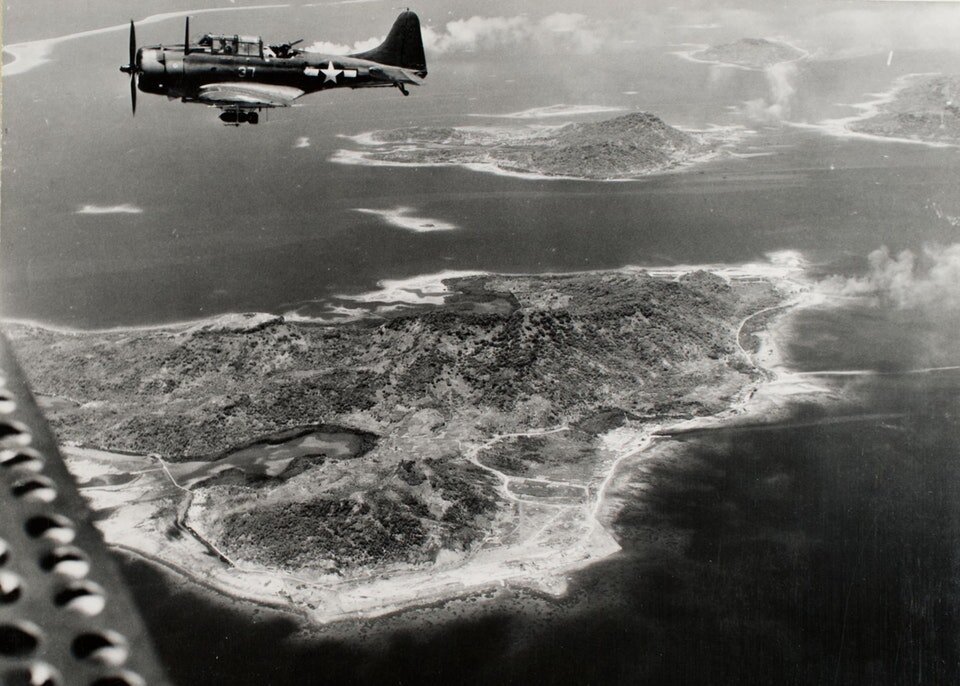2-20-1944 Dated - “Jaluit” - U.S.S. Enterprise CV-6 Aerial Reconnaissance Photograph (Marshal Islands Raid)












2-20-1944 Dated - “Jaluit” - U.S.S. Enterprise CV-6 Aerial Reconnaissance Photograph (Marshal Islands Raid)
Size: 4 x 5 inches
Letter of Authenticity included.
Dated 2-20-1944 this original ‘RESTRICTED’ World War II USS Enterprise aerial reconnaissance photograph is marked “Jaluit” and was taken by a U.S.S. Enterprise air group pilot and is also labeled with “CV6”. Taken with a K-20 aerial camera, the K-20 camera was originally designed as an all-purpose aerial camera and was used widely throughout World War II for vertical mapping, photography, and all types of aerial reconnaissance intelligence and bomb damage assessment.
Following the pilots combat mission in the area, and their safe landing aboard the deck of the USS Enterprise this photograph was then developed aboard the carrier’s photographic development crew and was marked, used, and examined by USS Enterprise pilots (such as Lt. Moore) and other USS Enterprise high ranking commanders and officers.
USS Enterprise and Jaluit:
G4-3. On 16 February, planes from ENTERPRISE participated in strikes against shipping and oil storage installations at Truk. Although the major units of the Japanese Fleet had already left that base, six enemy combatant ships and many enemy auxiliaries were sunk or damaged. The strikes continued through the seventeenth. Then the U.S. carriers and their escorts retired rapidly to the northeast, pausing to launch two strikes against shore installations on Jaluit, 20 February.
In Enterprise, Halsey and his Chief of Staff, CDR Miles Browning, had developed a plan for the raid. The Yorktown force - commanded by Rear Admiral Frank Jack Fletcher - would target Makin, in the Gilbert Islands, and Jaluit and Mili in the southern Marshalls. Halsey and Enterprise, accompanied by Spruance's cruisers, set their sights on Wotje and Taroa (in the Maloelap atoll) in the northern Marshalls. As the Marshalls were suspected of being well-defended, this seemed like a long enough list of targets. New intelligence received January 27, courtesy the submarine Dolphin SS-169, indicated they were not so heavily fortified as once thought, and reported significant enemy air and shipping activity at Kwajalein Atoll, 150 miles due west of Wotje. Browning - a brilliant and aggressive tactician at a time when the Navy desperately needed such men - convinced Halsey to add Kwajalein to his target list.
Comprehensive WWII combat history of USS Enterprise (CV-6):
The Yorktown class aircraft carrier, USS Enterprise (CV-6) was commissioned at Newport News, Virginia, on May 12, 1938. Relocating to the Pacific, she was at sea during the Japanese Attack on Pearl Harbor on December 7, 1941. Three days after, she became the first U.S. Navy warship to sink a Japanese warship, submarine I-70, and later that month participated in the Wake Island expedition. In April, Enterprise covered the Dootlittle Raid on Japan and participated in the Battle of Midway that June, where her planes helped sink three Japanese aircraft carriers and a cruiser. During the Guadalcanal Campaign, she covered the landings and participated in the battles of Eastern Solomons and Santa Cruz Islands. Despite being damaged in both battles, she launched aircraft to assist the ships involved in the Naval Battle of Guadalcanal. In late 1943 and early 1944, Enterprise took part in the Gilberts and Marshall invasions and air attacks on the Japanese in the Central and Southern Pacific. In the summer of 1944, she participated in the Marianas operation and the Battle of the Philippine Sea, followed with the largest naval battle in history, the Battle of Leyte Gulf in October.In February 1945, Enterprise took part in the Iwo Jima invasion, then raids on the Japanese home islands and the Okinawa campaign in April. Due to damage received by two kamikaze attacks in April and May, she returned to the United States with the distinction of being the most decorated U.S. Navy warship during the war. Following Japan's surrender, she helped transport U.S. servicemen back to the United States. Decommissioned in February 1947, Enterprise was re-designated (CVA-6) in October 1952 and then to (CVS-6) in August 1953. Despite efforts to turn her into a museum ship, she was sold for scrapping in July 1958.